Toscha Seidel was born in Odessa on November 17, 1899. He studied in St. Petersburg with Leopold Auer, the famed Hungarian violinist and pedagogue. His fellow students included violinists Jascha Heifetz, Efrem Zimbalist, Mischa Elman and Nathan Milstein. Seidel made his official concert debut on September 1, 1915, in Kristiania (what is now known as Oslo). This was followed by a European tour and a much revered North American debut at Carnegie Hall on April 14, 1918.
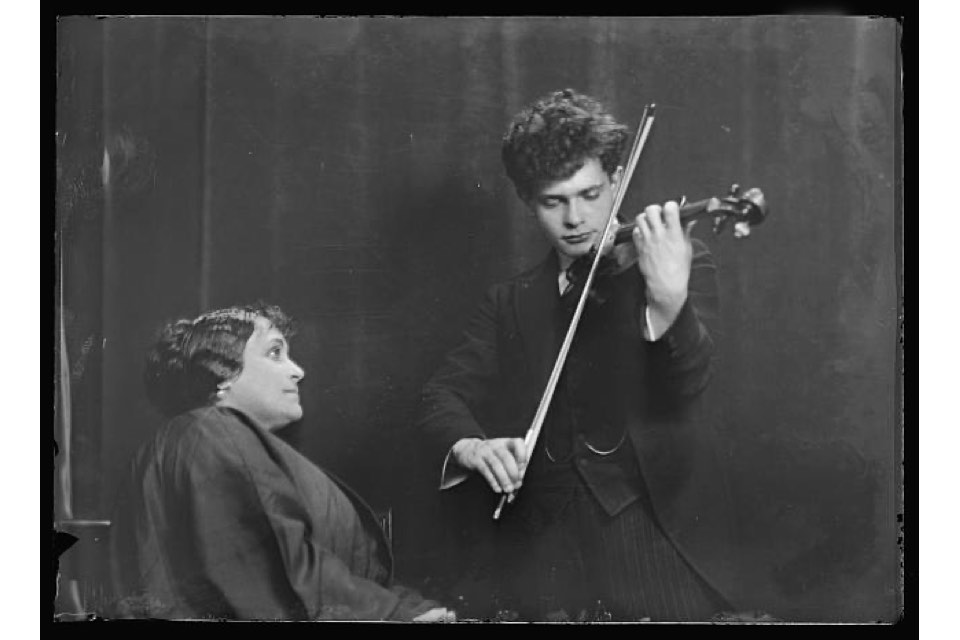
Toscha Seidel accompanied by Dame Myra Hess in c. 1920. (Genthe photograph collection, Library of Congress, Prints and Photographs Division)
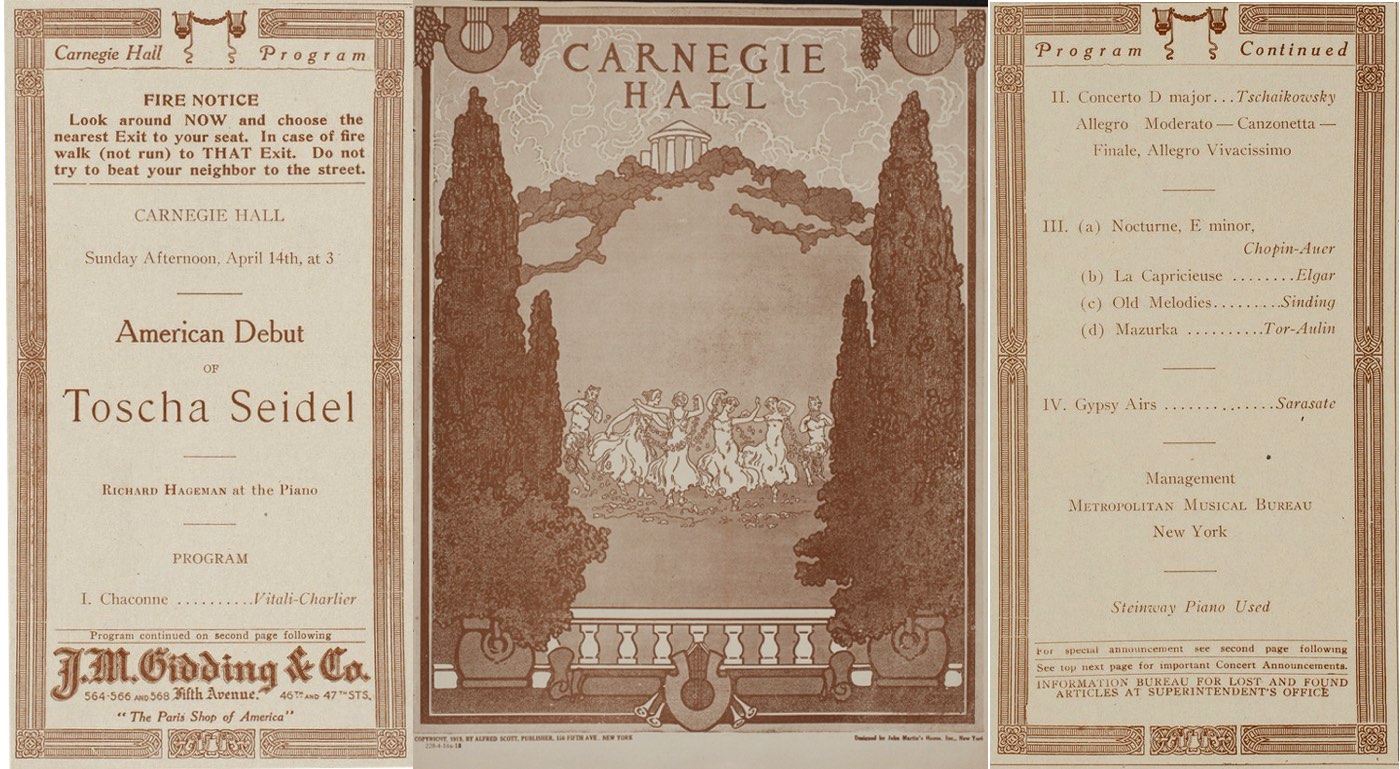
The program of Seidel’s debut at Carnegie Hall in 1918. (Courtesy of Carnegie Hall)
From an early age, Seidel was praised for his rich and romantic tone and for his free and expressive playing. The great pedagogue and violinist Carl Flesch said of Seidel: “The quality of [his] tone is one of the most beautiful I have heard in my career… it is an injustice of fate that he is not considered the third in a triumvirate with Heifetz and Elman.” In fact the comparison to Heifetz would continue to taunt – or haunt – Seidel for the rest of his career. The two played the Bach Double Concerto together in 1912 and 1913 when the boys were just 12 and 13 years old. In 1916 they played it again in Norway for the royal family. It is rumoured that Auer said of the two: “Jascha plays like an angel but Toscha plays like the Devil.”
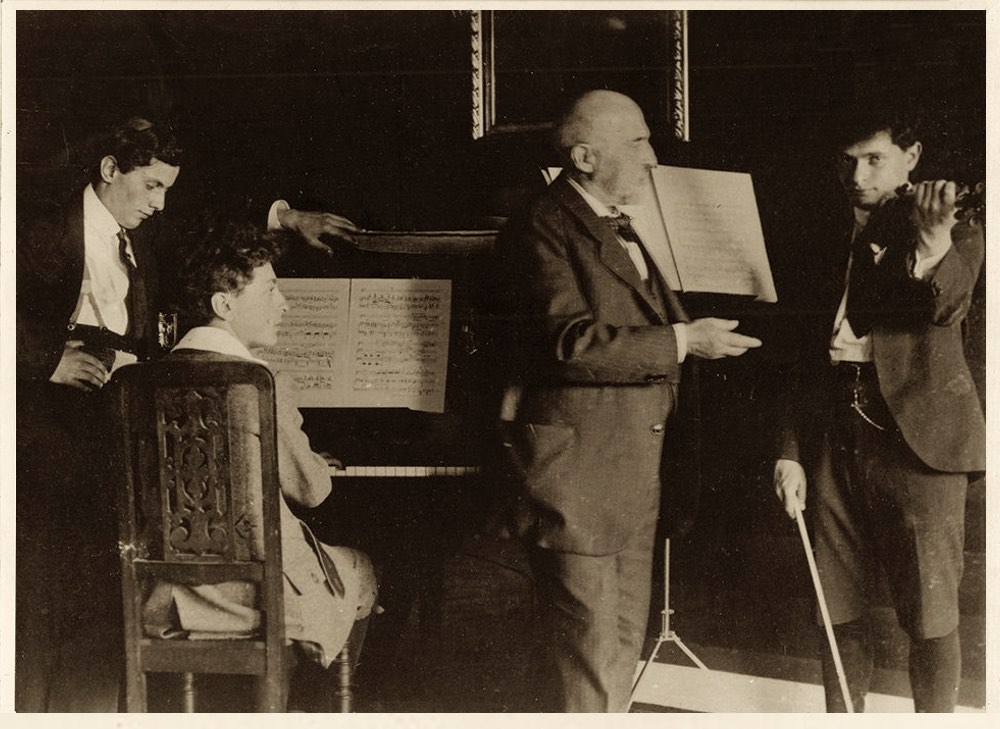
Max Rosen, Jascha Heifetz, Leopold Auer and Toscha Seidel in c. 1915. (photo sold by Tarisio in December 2008)
In 1924, Seidel acquired the ‘da Vinci’ from Emil Herrmann in New York and the news was reported on the front page of The New York Times. This was no doubt an eventful period for Seidel: just days after his purchase of the ‘da Vinci’ was announced, Seidel became an American citizen.[1] Through the 1920s he continued to tour across the United States, Europe and Australia, but in the early 30s he halted his concert career to become a radio and studio performer. He hosted the popular weekly radio show The Toscha Seidel Program and worked as CBS’s musical director.[2]
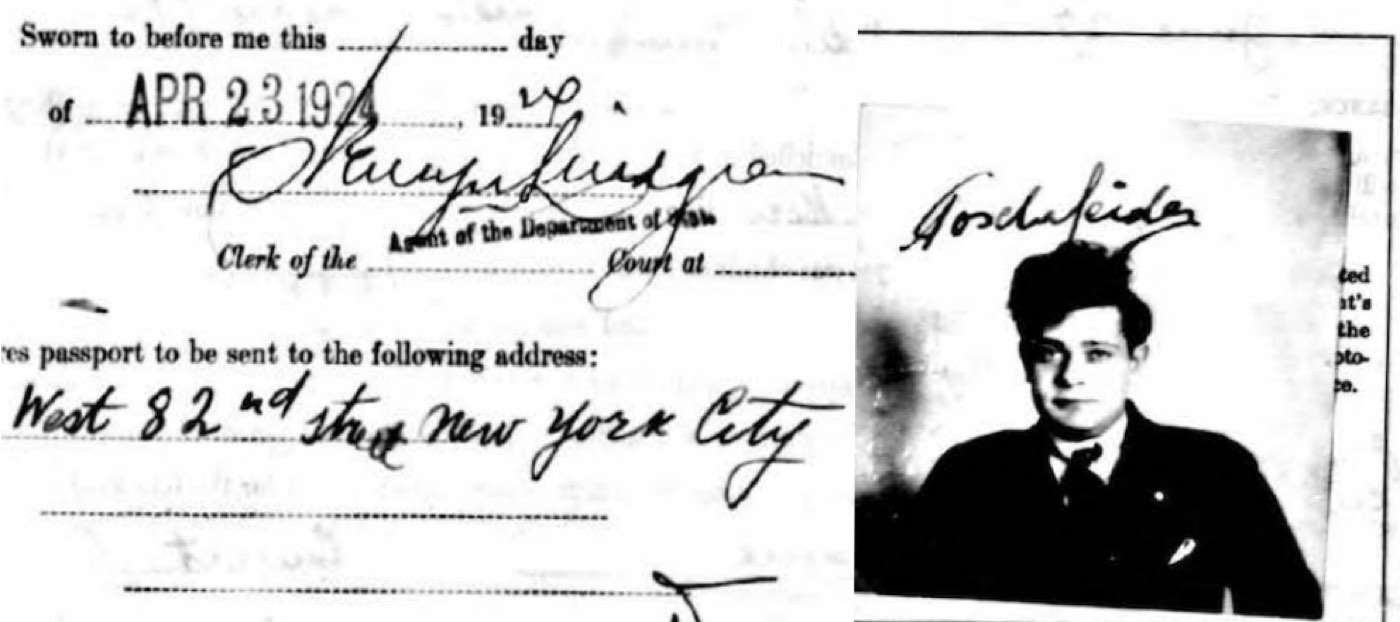
Toscha Seidel’s passport application filed on April 23, 1924, four days before his purchase of the ‘da Vinci’ Stradivari was announced in The New York Times.
In 1929, Seidel married Estelle Manheim[3] and moved to a house in Pelham, New York. They had a large dog named Hector who was “a perfect war lord of a Great Dane, one hundred-and-seventy pounds of him, stretching his powerful length across a doorstep.”[4] It was at this house in 1934 that Seidel first met Albert Einstein. In exchange for a hand-drawn sketch depicting the phenomenon of length contraction, Seidel gave Einstein violin lessons.[5] The two went on to perform a Bach Double Concerto at a fundraiser to benefit German-Jewish scientists imperiled by the Nazis.
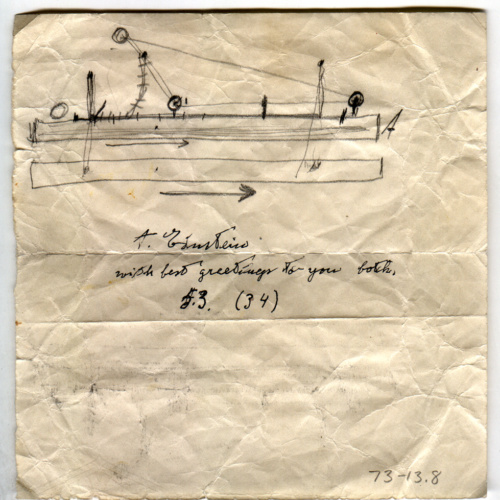
Albert Einstein’s sketch of the phenomenon of length contraction. (In the Magnes Collection of Jewish Art and Life at the University of California, Berkeley.)
A few exquisite recordings exist of Seidel in the late 20s and early 30s. In 1931 he recorded the Brahms and Grieg Violin sonatas, , recently re-released on Biddulph Recordings.
Seidel moved to California to play for the silver screen as a soloist and concertmaster for Paramount Studios. He was the uncredited violin soloist on the 1939 Hollywood classic musical The Wizard of Oz.[6] That same year he also recorded the famous theme from the critically acclaimed film Intermezzo, staring Ingrid Bergman and Leslie Howard.
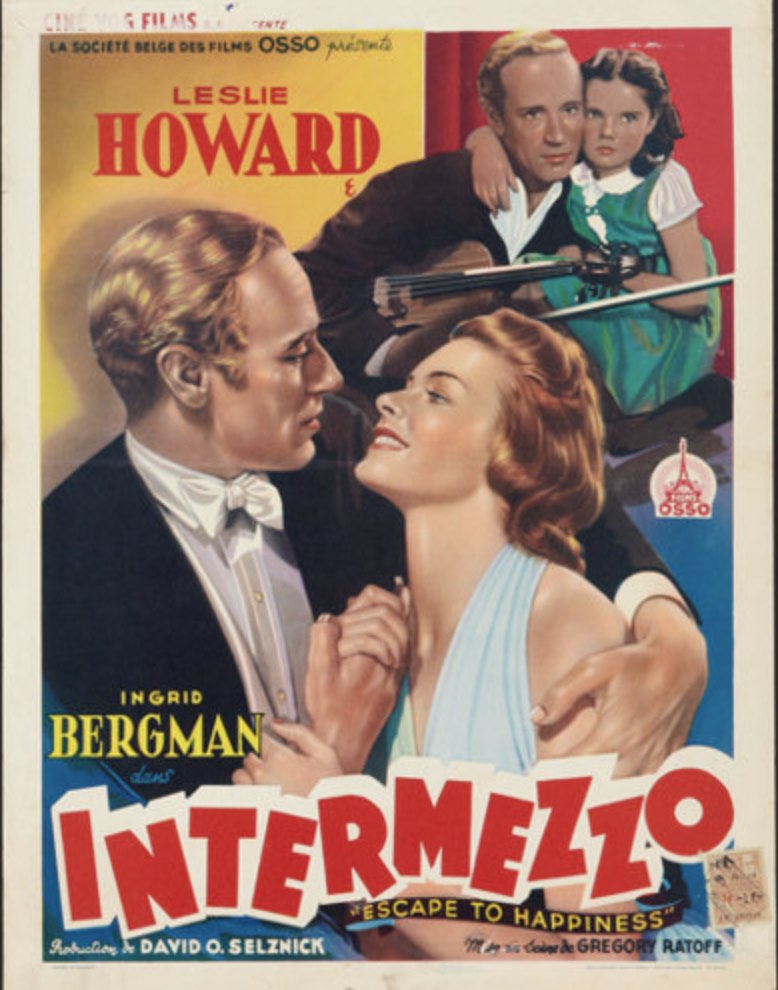
The 1939 Hollywood film Intermezzo prominently featured Seidel’s lyrical violin solos.
His movie work was balanced by commercial gigs and other studio recordings. In 1941 he recorded Erich Wolfgang Korngold’s Much Ado About Nothing accompanied by the composer at the piano.
Seidel and Estelle lived in a stately Tudor house in the Beverly Hills flats. He was friendly with Charlie Chaplin and the two would play duets at Chaplin’s house. After World War II, Seidel taught at the Los Angeles Conservatory of Music.
Seidel’s playing was quintessential Hollywood from its Golden Age: emotional and expressive, at times tempestuous, at times melodramatic. In an insightful 2017 article in The American Scholar, the violinist and writer Adam Baer, himself a student of a student of Seidel, summarized Seidel’s legacy in terms that stretch far beyond his career: “that we largely associate love scenes or depictions of the less fortunate in films—or any scene evoking tears or strong emotions—with the sound of the violin is largely due to Seidel.”[7]
And that is precisely what makes the ‘da Vinci, ex-Seidel’ Stradivari so significant. Whether we know it or not, we have heard this voice before and its memory recalls all the emotions, the tears and the romance of the great silver screen.
The ‘da Vinci, ex-Seidel’ will be sold at auction on June 9, 2022. With inquiries, please contact davinci@tarisio.com.
Notes
[1] Minko, Anne. “Seidel, Toscha.” Grove Music Online. 25 May. 2016, accessed 20 Jan. 2022. https://www.oxfordmusiconline.com/grovemusic/view/10.1093/gmo/9781561592630.001.0001/omo-9781561592630-e-1002293033.
[2] Baer, Adam. “The Sound of Tinseltown,” American Scholar, December 4, 2017, https://theamericanscholar.org/the-sound-of-tinseltown/
[3] “Toscha Seidel to Marry Today.” New York Times, 1 January, 1929, https://timesmachine.nytimes.com/timesmachine/1929/01/01/95701437.html?pageNumber=34
[4] The Pelham Sun. July 8, 1932.
[5] The sketch is held in the collection of the Magnes Collection of Jewish Art and Life at the University of California, Berkeley.
[6] Baer, Adam. “The Sound of Tinseltown.”
[7] Baer, Adam. “The Sound of Tinseltown.”